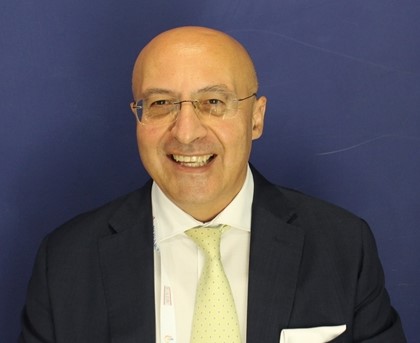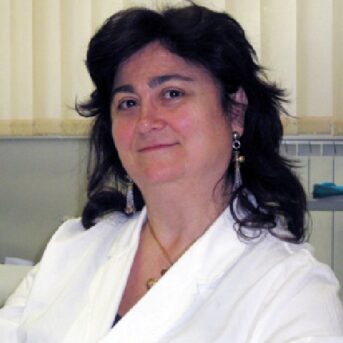Pharmacological and surgical therapeutic novelties are on the way; moreover, Profs Marzano and Prignano are at the head of a multi-specialist task force that will take charge of the patient to follow him at 360 degrees. SIDeMaST is also at the forefront to create an Italian and European registry on hidradenitis and new parameters for assessing the severity of the disease to better "focus" research and therefore therapeutic orientation


New drugs, increasingly widespread surgical therapy and a task force of expert specialists dedicated to research and patient care. These are the weapons to combat hidradenitis suppurativa unsheathed by the dermatologists of SIDeMaST, the Italian Society of Dermatology and Sexually Transmitted Diseases during the 12th Annual Congress of the EHSF (European Hidradenitis Supurativa Foundation) organized in Florence and chaired by Prof. Francesca Prignano, Associate Professor at the University of Florence and by prof. Nicola Pimpinelli, Director of the 1st ad interim and 2nd Dermatology Unit at the P. Palagi hospital in Florence.
Subscribe to the PRP Channel newsletter
Hidradenitis suppurativa is a real nightmare for patients. It is an immune-mediated dermatological disease that manifests itself with inflammatory nodules, abscesses and fistulas in the axillary and inguinal areas and even when it is mild or moderate, it has a heavy impact both on the quality of life and on a psychosocial level. Among the trigger factors are cigarette smoke, which facilitates inflammation of the hair follicle - triggering mechanism - obesity which also represents a worsening condition, since it causes greater friction at the level of the anatomical folds with increased sweating and an imbalance of the skin microbiota. Above all, it is now an increasingly less rare disease: if in 2019 an incidence of 3.2 cases per hundred thousand people was estimated with about 2.000 cases per year, data from the Observatory of Rare Diseases currently calculate 11.4 cases per hundred thousand inhabitants. And the numbers are certainly greater: the great embarrassment it causes leads patients to go to the dermatologist with great reluctance with a consequent underestimation of the phenomenon and delays in diagnosis of up to 7 years. In short, it is an increasingly widespread pathology to the point of being able to define it as the disease of the third millennium among those of the skin.
From the Florentine event, which saw Italian dermatology in the front row, the urgency of creating an Italian and European register emerged to have greater knowledge of the real incidence of the disease. But also the need to identify genetic links to distinguish the different phenotypes of the disease and strengthen the "scoring systems", parameters for assessing the severity of the disease necessary to facilitate research according to therapeutic orientation.
“The identification of genetic links allows for a better characterization of the various phenotypes of diseases – says Prof. Prignano, President and promoter of the Congress – it is very important for the purposes of treatment as the pathology often presents itself with profoundly different manifestations; for which the great scientific urgency is to be able to trace them for a better therapeutic contribution, especially for the most serious cases. Furthermore, other dermatological pathologies such as atopic dermatitis, acne and psoriasis are often associated with hidradenitis. The so-called comorbidities, pathologies associated with other organs or systems such as thyroid pathologies, diabetes, rheumatological forms such as inflammatory arthritis and chronic inflammatory bowel diseases such as Chron's disease and ulcerative colitis can aggravate the situation ".
On the therapeutic front, if the milder cases range from topical to systemic antibiotics, the severe cases are treated with biological drugs. "In addition to the already known Adalimumab, a new active ingredient is Secukinumab" explains Prof. Angelo Valerio Marzano, Full Professor of Dermatology at the University of Milan, Director of the UOC Dermatology Foundation IRCCS Ca' Granda Ospedale Maggiore Policlinico of Milan: "Secukinumab does not it is still reimbursable, but the specialist can request it from the hospital to use it off-label, as a second treatment option in cases where the patient does not respond to adalimumab”.
Meanwhile, the combination of biological drugs and biological drugs and surgery acquires more and more space, as Prof. Prignano affirms: “Surgery ranges from the mildest to the most radical. The first consists in the drainage of abscesses and is limited to the removal of limited areas and can be performed by the dermatologist; the second consists in the removal of entire parts of tissue which include hair follicles and apocrine glands affected by the infection. At the moment this second option is practiced in Italy only in some specialized centres. But we are certain that as the pathology comes 'out into the open' surgery will become increasingly protagonist and decisive so that in the future we will need more surgeons who deal with hidradenitis and dermatologists who specialize in this type of surgery”.
But the spearhead of SIDeMaST is the task force of which Prof. Marzano and Prignano are respectively President and Vice-President, which provides for the creation of multi-specialist groups in the area: "The peculiarity of our task force - says Prof. Marzano - is contribute to international research studies based mainly on real life. This is why our precious source will increasingly be the territory also thanks to the creation of multidisciplinary teams made up of dermatologists, plastic surgeons, gynecologists, gastroenterologists, rheumatologists, psychologists, psychiatrists who will follow patients at 360 degrees.” Furthermore, conclude Prof. Marzano and Prignano, “thanks to the collaboration with patient associations we are planning a widespread information and awareness campaign in hospitals, high schools, on social media and in the press. The more the disease becomes known, the more data we collect, in fact thanks to this operation we are also investigating hidradenitis in children and those over 65 and the correlation with tumors".
